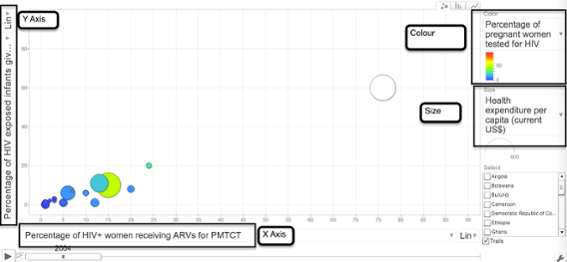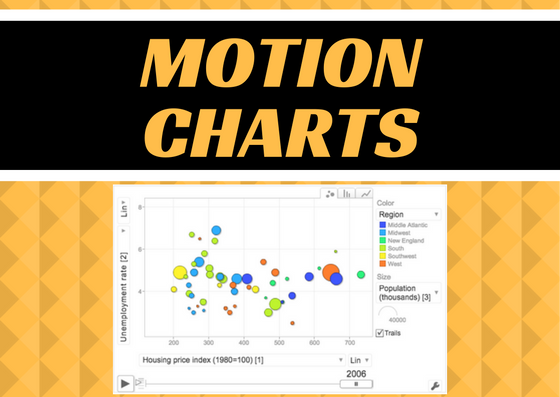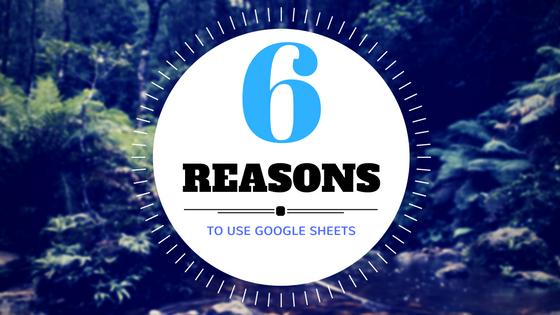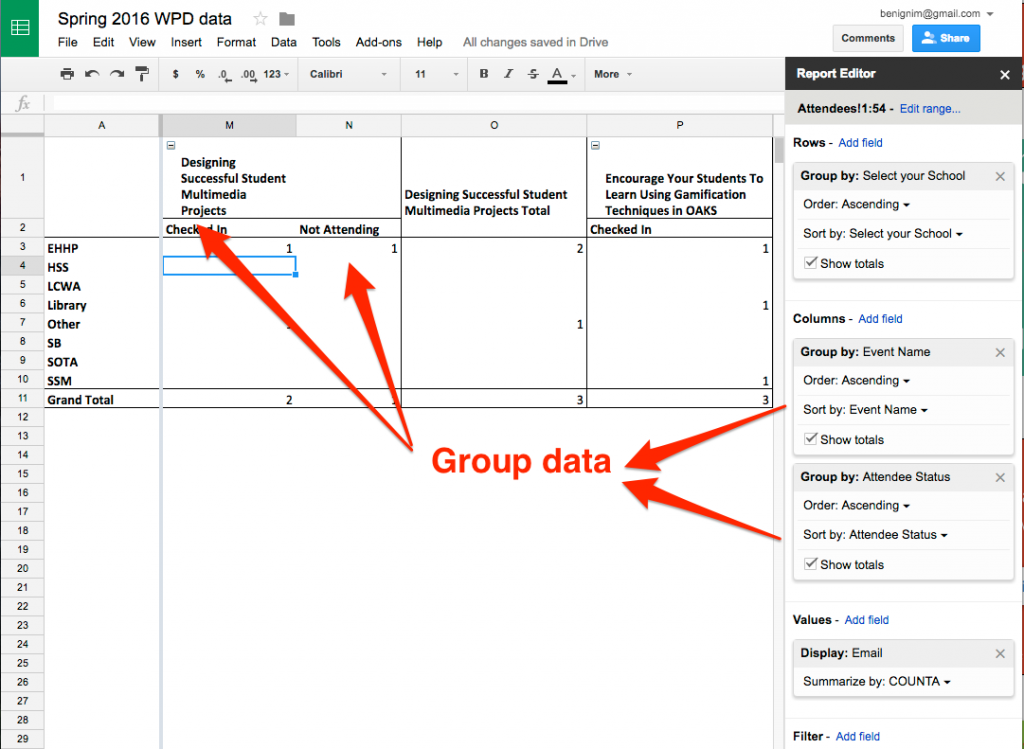While motion charts are not new, I just learned about them and I thought they would be something that faculty can use in their classes to help students see and understand certain concepts in their classes.
Motion Chart
A motion chart, at least as it’s used in this post, is a bubble chart that can be controlled by the viewer, not the creator. It allows the viewer to visualize multiple dimensions of the data. These dimensions are shown by the bubble size, color and position on the chart over time. Here is an example from Kwantu.com:
- Vertical (Y) axis – Percentage of HIV exposed infants given ART for PMTCT at birth
- Horizontal (X) axis – Percentage of HIV+ women receiving ARVs for PMTCT
- Bubble size – Health expenditure per capita (current US$)
- Bubble colour – Pregnant women receiving prenatal care (%)
- Time – Years
According to JuiceAnalytics, “modern-day motion charts were developed by an organization called GapMinder as part of a product called Trendalyzer. Hans Rosling, one of the founders of GapMinder, popularized the motion chart visualization in a much-admired TED Talk.”
What are they good for?
What I think sets this chart type apart from other charts in either Excel or Google Sheets, is that they are interactive. The end-user can use the sliders to change time and the dropdown menus to change the data parameters shown. It allows the viewer the control over what they see to help them better understand the data and to work with it in multiple ways. Any discipline that uses statistical or relational data over time can benefit from a motion chart (political science, sociology, history, education, biology, etc.).
How do you make one?
With Google Sheets, part of CofC’s Google Apps for Education (G-Suite), you can make a motion chart in just a few easy steps.
- Create the data in Google Sheets, or upload it from an existing Excel spreadsheet into Google Drive.
- Column A (first column) should contain the data you want to track. In the example above, it is Country.
- Column B should contain the time data and should be sorted/grouped by time.
- Column B also needs to be formatted as a date, not text.
- Highlight all the data in the table and click on Insert > Chart.
- Choose the Chart Types tab.
- Scroll to the bottom under Other and choose Motion Chart.
- Click Insert.
- Once it’s inserted you will be able to change the X/Y access, use the scroll bar to slide through the times and the boxes on the right to narrow the data seen.
BONUS — You’ll also notice, in the upper right corner, that you can choose between a bubble chart, bar chart, or a line chart.
Let us know
If you try this let us know how you are using it in your teaching or with your students! We love to hear from faculty.



 How many times have you heard, “Student X didn’t contribute anything to the project.” Now you can see exactly who contributed what and when using the Revision History. The built-in revision history gives you a timeline of all changes and additions to the spreadsheet, who made each one and when they made it. Just go to File > Revision History to see this record. The best part? This is all automatically recorded. While you can track revisions in Excel, it’s a more manual process and in the end, still leads to multiple versions and things being overwritten.
How many times have you heard, “Student X didn’t contribute anything to the project.” Now you can see exactly who contributed what and when using the Revision History. The built-in revision history gives you a timeline of all changes and additions to the spreadsheet, who made each one and when they made it. Just go to File > Revision History to see this record. The best part? This is all automatically recorded. While you can track revisions in Excel, it’s a more manual process and in the end, still leads to multiple versions and things being overwritten. Sheets has a super cool EXPLORE icon in the lower right corner of every spreadsheet. This offers a quick overview of the data in chart format. You can view the entire sheet or just specific rows or columns. It’s a fast way to get a first look at the trends in your data before moving on to your own analysis. Just click on the icon and Google does the rest. Don’t worry, if this doesn’t provide enough analysis you can always create your own graphs, pivot tables, and calculations. Excel doesn’t have this feature that I can find.
Sheets has a super cool EXPLORE icon in the lower right corner of every spreadsheet. This offers a quick overview of the data in chart format. You can view the entire sheet or just specific rows or columns. It’s a fast way to get a first look at the trends in your data before moving on to your own analysis. Just click on the icon and Google does the rest. Don’t worry, if this doesn’t provide enough analysis you can always create your own graphs, pivot tables, and calculations. Excel doesn’t have this feature that I can find.




